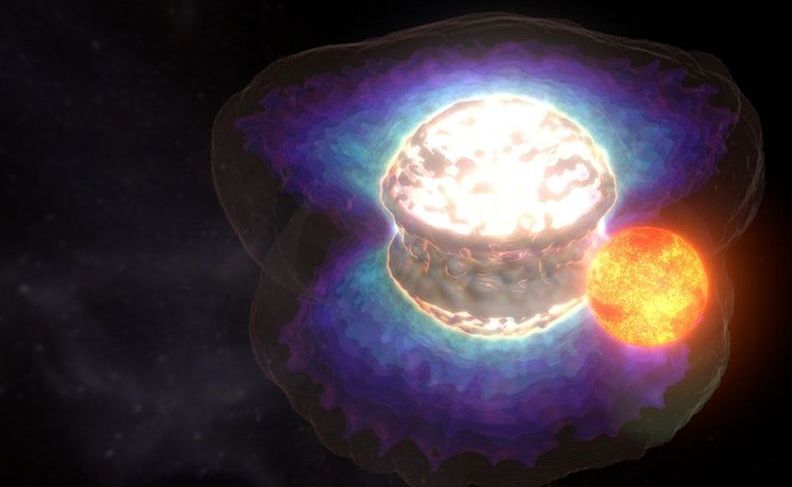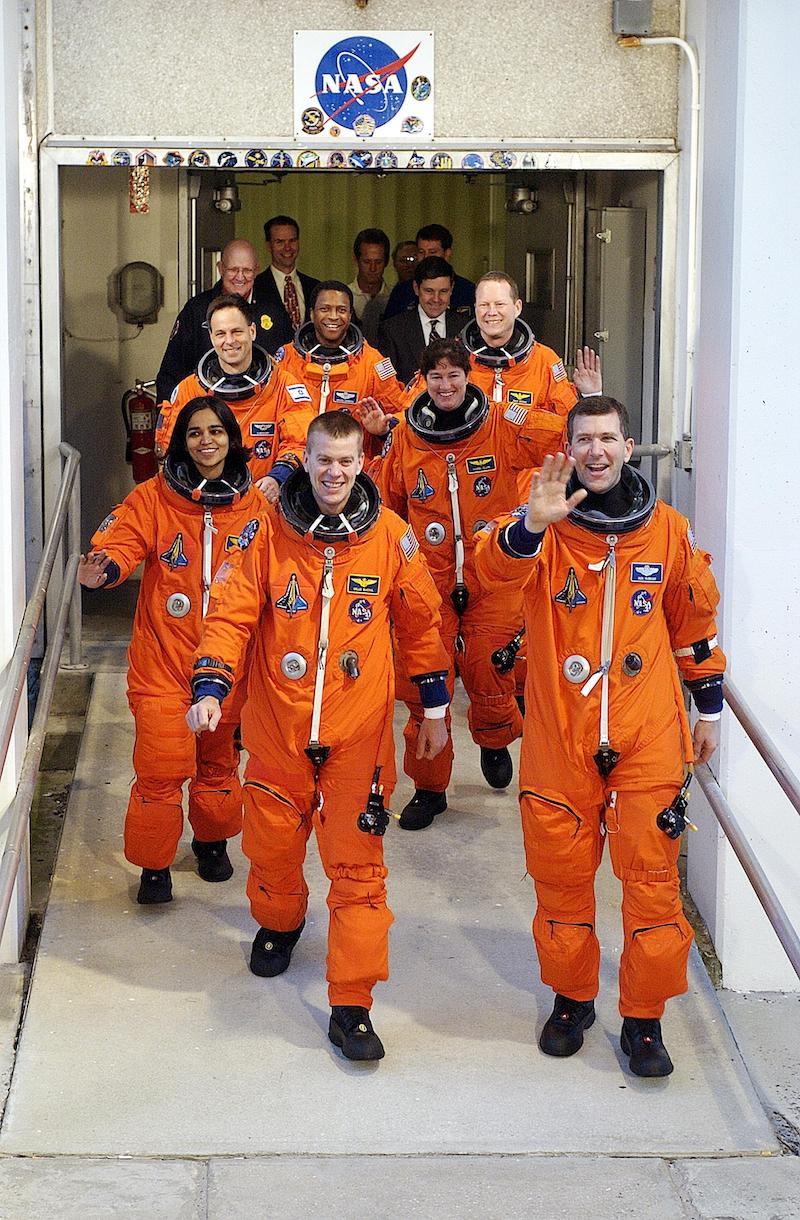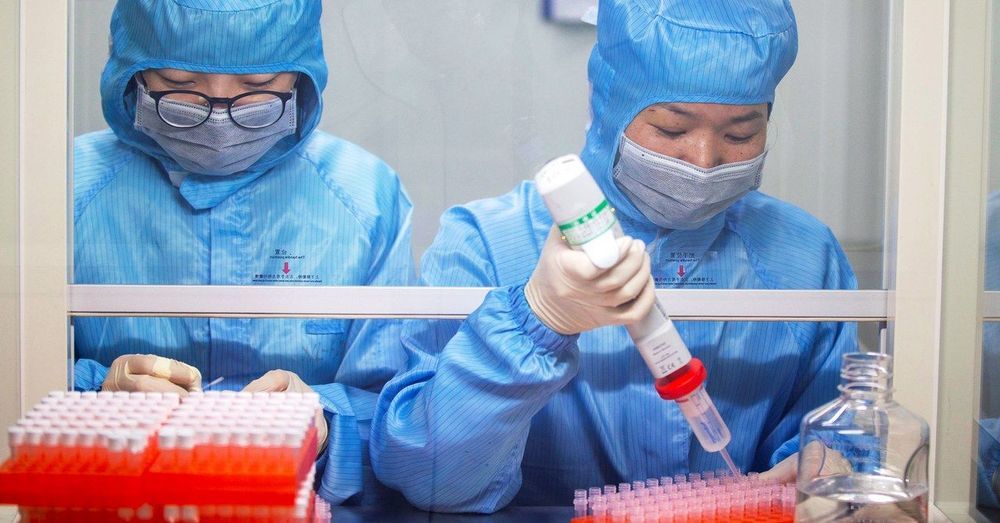NASA’s Chandra X-Ray Observatory is altering our perspective on the cosmos — and it is beautiful.
Here’s a look back at our coverage of Columbia’s final mission, the tragic loss of seven astronauts, and the investigation into the cause of the accident: https://spaceflightnow.com/shuttle/sts107/
Circa 2017 Bats harbor a large diversity of coronaviruses (CoVs), several of which are related to zoonotic pathogens that cause severe disease in humans. Our screening of bat samples collected in Kenya from 2007 to 2010 not only detected RNA from several novel CoVs but, more significantly, identified sequences that were closely related to human CoVs NL63 and 229E, suggesting that these two human viruses originate from bats. We also demonstrated that human CoV NL63 is a recombinant between NL63-like viruses circulating in Triaenops bats and 229E-like viruses circulating in Hipposideros bats, with the breakpoint located near 5′ and 3′ ends of the spike (S) protein gene. In addition, two further interspecies recombination events involving the S gene were identified, suggesting that this region may represent a recombination “hot spot” in CoV genomes. Finally, using a combination of phylogenetic and distance-based approaches, we showed that the genetic diversity of bat CoVs is primarily structured by host species and subsequently by geographic distances.
bMarie Bashir Institute for Infectious Diseases and Biosecurity, Charles Perkins Centre, School of Life and Environmental Sciences and Sydney Medical School, The University of Sydney, Sydney, Australia.
Find articles by Mang Shi
aDivision of Viral Diseases, Centers for Disease Control and Prevention, Atlanta, Georgia, USA.
Uber-flying-car-2020.
Uber aims to prove once again its intention to stay at the crest of innovation with the latest updates of its flying car concept, which it plans to launch by 2020.
In a recent video (watch below), the company depicts passengers ordering flying cabs vie their app and then taking off form a “skyport” on top of an office building.
If you are interested in superlongevity, then I have something that you must read. I have previously recommended a book by Dr. David Sinclair called Lifespan. Here I am recommending a research paper that discusses one of the critical experiments in epigenetic age reversal. Normally I would read a paper first before recommending it. However, I think this is a blockbuster, and it’s over 50 pages, so I can’t wait till my slow eyes finish before passing this on. Here is an excerpt:
Age reversal!
The primary research scientist is Yuancheng Lu.
Here’s a link to the research paper:
Ageing is a degenerative process leading to tissue dysfunction and death. A proposed cause of ageing is the accumulation of epigenetic noise, which disrupts youthful gene expression patterns that are required for cells to function optimally and recover from damage1 – 3. Changes to DNA methylation patterns over time form the basis of an ‘ageing clock’4, 5, but whether old individuals retain information to reset the clock and, if so, whether this would improve tissue function is not known. Of all the tissues in the body, the central nervous system (CNS) is one of the first to lose regenerative capacity6, 7. Using the eye as a model tissue, we show that expression of Oct4, Sox2, and Klf4 genes (OSK) in mice resets youthful gene expression patterns and the DNA methylation age of retinal ganglion cells, promotes axon regeneration after optic nerve crush injury, and restores vision in a mouse model of glaucoma and in normal old mice. This process, which we call recovery of information via epigenetic reprogramming or REVIVER, requires the DNA demethylases Tet1 and Tet2, indicating that DNA methylation patterns don’t just indicate age, they participate in ageing. Thus, old tissues retain a faithful record of youthful epigenetic information that can be accessed for functional age reversal.
Scientists studied 17,308 human brains from the UK Biobank to see how alcohol affects brains. The brain ages one week per drinking session.
Surprising findings could springboard the development of new anticancer drugs, or potentially even directly repurpose existing drugs for cancer therapy.
Drugs that are currently used to treat a wide range of conditions such as diabetes, inflammation, alcoholism, and even canine arthritis, can also kill laboratory-grown cancer cells, according to the results of a study by scientists at the Broad Institute of MIT and Harvard and Dana-Farber Cancer Institute. Using a molecular barcoding technology called PRISM (profiling relative inhibition simultaneously in mixtures) the researchers were able to screen thousands of existing drug compounds against different types of cancer cell lines. The results identified 49 compounds with previously unrecognized anticancer activity. The researchers say their surprising findings, which highlighted novel anticancer mechanisms and targets, could feasibly be used to springboard the development of new anticancer drugs, or potentially even directly repurpose existing drugs for cancer therapy.
We thought we’d be lucky if we found even a single compound with anticancer properties, but we were surprised to find so many,” said Todd Golub, MD, CSO and director of the cancer program at the Broad, the Charles A. Dana investigator in human cancer genetics at Dana-Farber, and professor of pediatrics at Harvard Medical School. Golub and colleagues reported their findings in Nature Cancer, in a paper titled, “Discovering the anticancer potential of non-oncology drugs by systematic viability profiling.”
A hungry nanoparticle that enters your body and eats away at your insides sounds like a nightmare straight out of a Michael Crichton novel. In fact, it could be a future defense against heart attacks, strokes, and potentially other fatal diseases — as strange as that might initially sound.
Developed by scientists at Michigan State and Stanford universities, the innovative new “Trojan Horse” nanoparticle works by munching away portions of the plaques responsible for heart attacks. In a proof-of-concept demonstration, the researchers recently showed that their specially developed nanoparticle is able to accurately home in on atherosclerotic plaque, which is responsible for atherosclerosis, one of the leading causes of death in the United States.
“What the nanotherapy does is it enters inflammatory monocytes [a type of white blood cell] in the blood, and carries them into the plaque — hence the ‘Trojan Horse’ label — where they become macrophages, and stimulatesthose and other macrophages in plaque to devour cellular debris,” Bryan Smith, associate professor of biomedical engineering at MSU, told Digital Trends. “This ‘taking out the trash’ attribute stabilizes the plaque with minimal side effects.”
Scientists are posting their papers on the China outbreak as fast as they can write them, skipping traditional journals.
New gut bacteria research reveals that gut microbes can differ depending upon what region of the world you live in.









